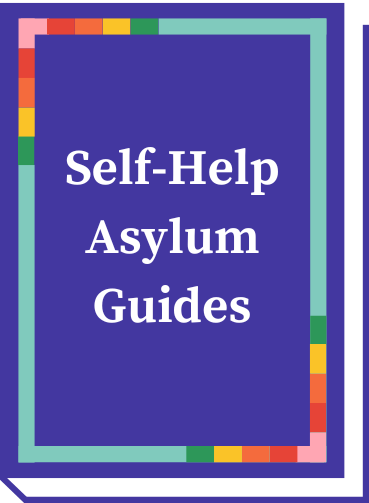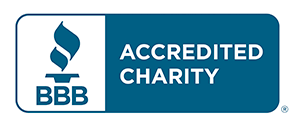
The information contained herein is for reference only and may not be up to date. It does not constitute legal advice. You should always consult an attorney regarding your matter.
One of the greatest fears that an asylum adjudicator has is that the applicant has fabricated their story and that nothing they are saying is actually true.
It is therefore essential to provide as much supporting documentation as possible to corroborate the applicant’s claim. Obviously, the most important documentation is that which goes to the heart of the applicant’s claim – police records, medical records, affidavits and letters of partners, friends and family who witnessed the harm the applicant suffered – but it is also helpful to provide corroborating documents for other aspects of the applicant’s story, including school records, employment records, and proof of community involvement.
It often takes considerable time and effort for an applicant to obtain corroborating documents, especially since such documents generally come from their country of origin, and they may not be in touch with family members or friends there anymore. It is therefore important to begin brainstorming with the applicant almost immediately about what kind of corroborating documentation they will be able to provide.
Pursuant to the Real ID Act of 2005, asylum applicants are required to provide corroborating documents for their claims or offer a specific explanation of why it would not be possible to obtain the supporting documents. See Section #9 for a practice advisory on the Real ID Act.
Understanding the significance of supporting documentation, the next question is what types of documentation should the applicant include? How can supporting documentation help prove the claim? The following is a “brainstorming” list, but it is not exhaustive. The more supporting documentation the applicant can provide (so long as it’s not needlessly redundant) the better.
See Section #21 for more in depth information on documenting country conditions.
If your client has ever been arrested in the United States, even if they were never convicted of anything, or even if the case was dismissed and sealed, they must obtain original, certified dispositions of the criminal cases. You can submit photocopies of the dispositions when you send in the asylum application, but by the time of the interview or hearing your client must have original, certified dispositions to give to the Asylum Officer or Immigration Judge.
In addition to meeting the legal definition of refugee, an asylum adjudicator will look at all the relevant facts to determine if the applicant “deserves” asylum. Any documentation of positive factors should be included (especially if there are negative factors, such as arrests, to counterbalance.) This proof could include:
In an affirmative asylum application, sworn or affirmed affidavits are submitted with the application. Asylum Officers will generally allow submission of unsworn letters, but may give them less weight than sworn statements. If the person who wrote the letter was afraid to get the document notarized (in many other countries, obtaining a notarization is a much more formal procedure than in the United States), the person writing the letter should explain the basis of her fear of doing so. The witnesses writing these statements are not required to appear at the asylum interview.
Affidavits from family or friends which are being used to corroborate LGBTQ/H status should include: 1) the approximate date when the family member or friend first learned of the sexual orientation, gender identity, or HIV status of the applicant, and/or the relationship between the applicant and their partner; 2) how long the family member or friend has known the applicant or partner, and; 3) any LGBTQ/H-oriented activities in which the applicant participates (e.g., pride parades, support groups, bars, films or other community or relevant cultural events).
In an application for asylum before the immigration court, the Immigration Judge (IJ) may not allow the introduction of statements by individuals who are not willing to appear in court to testify, unless they are unable to do so because of prohibitive travel costs, or for other compelling reasons. In such cases, the IJ may or may not admit the affidavits. In general, and as discussed in Chapter 27, Immigration Courts have much stricter rules for admitting evidence than Asylum Officers do. This is one of many reasons that it is important to do the best possible job in preparing the application at the Asylum Office level.
In an application for asylum before the immigration court, the Immigration Judge (IJ) may not allow the introduction of statements by individuals who are not willing to appear in court to testify, unless they are unable to do so because of prohibitive travel costs, or for other compelling reasons. In such cases, the IJ may or may not admit the affidavits. In general, and as discussed in Chapter 27, Immigration Courts have much stricter rules for admitting evidence than Asylum Officers do. This is one of many reasons that it is important to do the best possible job in preparing the application at the Asylum Office level.
All foreign-language documents must be translated into English, or they will not be accepted by the Asylum Office or the immigration court. Anybody but the applicant who can swear that they are competent in English and the foreign language can do the translation and sign the certificate of translation. There is no requirement that the translator have any professional training in translation; they must simply be able to certify in a notarized certificate that they are competent to render the translation.
Although it is not preferred, there is no rule prohibiting the attorney of record form certifying translations. Whenever a foreign language document is being submitted, the entire document must be translated, not just the relevant sections.
Every foreign language document must have its own certificate of translation attached. For each exhibit, you should attach first the English version, then the foreign-language version, then the certificate of translation.
Two examples of a typical translation certificate follow:
I, Rita Garcia, hereby certify that I translated the attached document from Spanish into English and that to the best of my ability it is a true and correct translation. I further certify that I am competent in both Spanish and English to render and certify such translation.
_________________________________ Rita Garcia Sworn to before me this 7th day of September 2005
_________________________________ Notary Public
» Practice pointer: Sometimes, if the applicant is fluent in English and their native language, you can ask the applicant to do the translations (since they may have more time to spend on this than do the staff in your office), and you can then have a third party who is fluent in both languages review the translation and submit a Certificate confirming that they have reviewed the translation and that the translation is accurate.
An example follows:
I, Rita Garcia, hereby certify that I reviewed the attached documents and that to the best of my ability I certify that the English translation of the Spanish document is true and accurate. I further certify that I am competent in both English and Spanish to render and certify such translation.
_________________________________ Rita Garcia Sworn to before me this 7th day of September 2005
_________________________________ Notary Public
This Manual is intended to provide information to attorneys and accredited representatives. It is not intended as legal advice. Asylum seekers should speak with qualified attorneys before applying.
The information contained herein is for reference only and may not be up to date. It does not constitute legal advice. You should always consult an attorney regarding your matter.
This handbook is intended for use by pro bono attorneys and immigration attorneys working on LGBTQ/HIV asylum cases.

Self-help asylum guides for LGBTQ and HIV-positive people without attorneys.
If you are in detention, call:
Calls from people outside of detention will not be accepted.
Hours: M-F 9:30am - 5:30pm ET
single-asylum.php

If you are in detention, call : (917) 654-9696 | M-W 9:30 - 5:30pm & Th 1:00 - 5:30pm
Calls from people outside of detention will not be accepted.
For general inquiries, call : (212) 714-2904
Hours: M-F 9:30am - 5:30pm ET